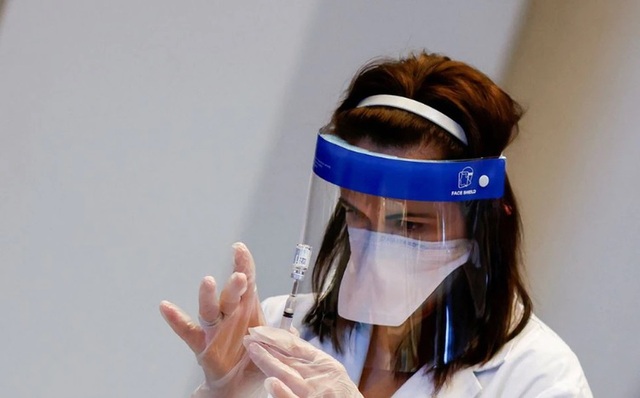Astonishing new study on rate of F0 still symptomatic after 2 years
As more countries move into a state of living with COVID, more and more research is being done on post-COVID-19 symptoms.
Because COVID-19 is a relatively new disease, scientists still don’t fully understand why COVID-19 symptoms can persist for months or even years.
Scientists who study COVID often attribute the long-lasting health effects people experience after contracting COVID to inflammation throughout the body. Some other experts suspect people with prolonged COVID-19 still have small amounts of the virus in their bodies, causing problems like fatigue, dizziness, brain fog, chest pain or joint pain.
Many people still have symptoms of COVID-19 after two years
Half of COVID-19 patients who were hospitalized in a Chinese hospital in early 2020 still have at least one symptom two years after being infected, a new study finds.
The study was published May 12 in the journal The Lancet Respiratory Diseases.

Healthcare workers prepare to give Johnson & Johnson vaccines against COVID-19 at a vaccination center in Chicago, Illinois, US, April 6, 2021. Photo: REUTERS / Carlos Barria
The study looked at 2,469 people who were hospitalized with COVID-19 in China and recovered. Overall, regardless of the severity of the illness at first, all study participants experienced improvements in their physical and mental health over time.
Nearly 90% of the employed study participants returned to work within two years.
Healthcare workers prepare to give Johnson & Johnson vaccines against COVID-19 at a vaccination center in Chicago, Illinois, US, April 6, 2021. Photo: REUTERS / Carlos Barria
However, people recovering from COVID-19 were “significantly” worse off than the general population after two years, and the effects of lingering COVID symptoms “remained quite high”, the researchers said. research said.
Additionally, within two years, 55% of participants still had at least one post-COVID-19 symptom. Fatigue or muscle weakness were the most commonly reported symptoms during the study. Patients who require mechanical ventilation because of severe illness still have a high rate of lung problems after two years.
“Our study shows that for a certain proportion of people who recover from COVID-19 who have been hospitalized, even though they may have recovered from the disease, it takes more than two years to recover,” the researchers said. fully recovered from COVID-19″.
Another study finds a way to identify post-COVID patients
After more than 2 years of the COVID-19 pandemic, doctors and nurses are becoming more and more aware of the persistent signs of COVID. But studies have yet to find out exactly what causes COVID to persist.
“There’s a very good chance it’s not just a medical condition,” said Dr. Francis Collins, director of the National Institutes of Health, which has invested more than $470 million in long-term COVID-19 research.
Persistent Covid is a polymorphic condition that can include dozens of symptoms. One large study even identified more than 200 symptoms of persistent COVID, such as headache, exhaustion, brain fog (loss of consciousness, poor concentration, lack of clarity…) and shortness of breath. F0 with severe or mild illness, young or old, can have persistent COVID.

Persistent Covid is a polymorphic condition that can include dozens of symptoms. (Illustration)
About 10-30% of COVID-19 patients may experience the above symptoms continuously for at least a month, in many cases months or even a year after their first infection (according to the Centers for Disease Control and Prevention). American Disease Prevention).
A new study shows that markers of inflammatory proteins in the blood can help determine if a person has persistent COVID-19 and help find treatment for these problems.
The researchers looked at 55 people with persistent COVID, all of whom had only mild cases of COVID-19.
They found that about two-thirds of the participants had high levels of the inflammatory protein in their blood. Inflammation occurs most in people most affected by persistent COVID symptoms.
The study was posted on May 11 on the bioRxiv publishing platform.
Previous studies have found elevated levels of inflammatory proteins in patients with persistent COVID. But the latest study provides the first evidence that more than half of the participants had elevated protein levels, while the others did not, the researchers say.
Lead researcher, Troy Torgerson of the Allen Institute for Immunology in Seattle, US, said: “At least two different pro-inflammatory protein trends have been detected. The existence of these trends suggests that the immune system is immune. The epidemic is being activated in specific ways that may respond to treatment with existing anti-inflammatory or immunosuppressive drugs,” Torgerson said.
“The level of inflammatory protein in the blood can help identify patients with persistent COVID. These people may be good candidates for treatment studies using these drugs or other treatments.” potential in the future”.
(Source: Reuters, NPR)
at Blogtuan.info – Source: cafebiz.vn – Read the original article here



